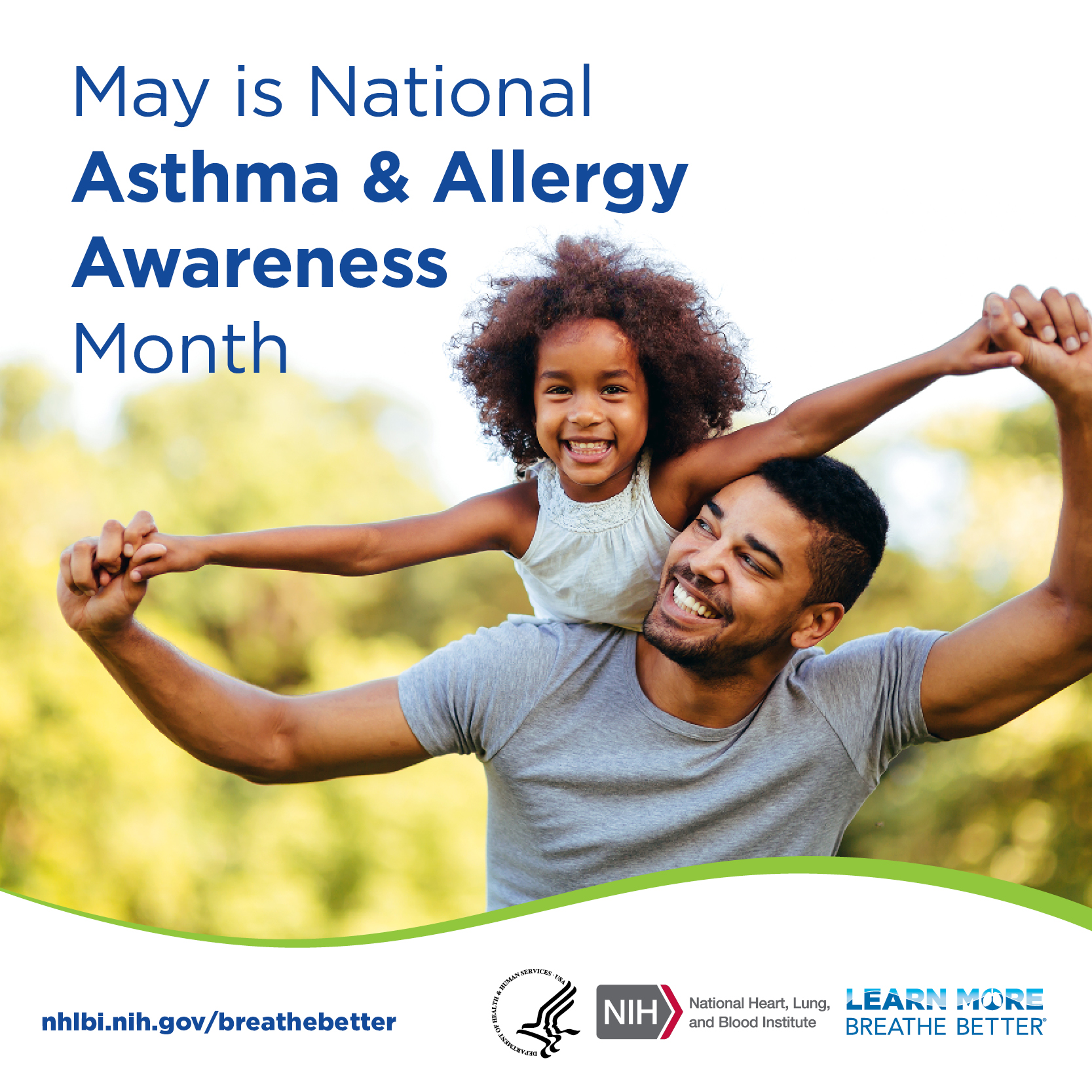Asthma Social Media Resources to Help People #BreatheBetter
Raise awareness about asthma by sharing these graphics and sample posts (in English and in Spanish) on your social media channels.
- Use hashtags: #AsthmaAwareness, #BreatheBetter
- Tag us! @BreatheBetter on X and @BreatheBetter on Facebook
Check out more asthma social media resources, including GIFs, infographics (Asthma, Asthma and Your Environment, and Asthma in Kids), Asthma in Our Communities resources, women and lung health graphics, state-based prevalence cards, and videos.




School staff can be a key part of your child's asthma care team.
Share your child's asthma action plan with the school nurse, teachers, or other trusted adults.


Pet dander, dust mites, pests, and smoke can all make asthma symptoms worse.
Ask a healthcare provider about your asthma triggers.


Managing asthma at school. Schools, like other enclosed spaces, can attract lots of allergens like dust mites, pests, and mold. Work with a healthcare provider to make an asthma action plan.
Share it with your child's teacher, school nurse, and other trusted adults at school.


Managing asthma at work. In the workplace, hundreds of things can trigger asthma like:
- Metal dust
- Bleaches
- Hair dyes
Asthma triggers can change over time. Your body may react differently after repeated exposures, such as at your workplace.
Talk to your healthcare provider if your asthma worsens after being at work.


Avoiding asthma triggers may help reduce the inflammation in your lungs, reduce symptoms, and reduce your need for emergency relief medication.


Asthma is the most common chronic disease of childhood.
In an average classroom of 30 kids, about 3 have asthma.
About 4 in 10 children who wheeze when they get colds or respiratory infections will be diagnosed with asthma.



Black Americans are almost four times more likely to be hospitalized because of their asthma than white Americans.


Hispanic/Latino Americans are twice as likely to visit the ER for asthma than white Americans.



Women with asthma generally have more symptoms than men. They also rely more on rescue medications. Make sure your asthma action plan works for you.




Some signs and symptoms of asthma: ongoing coughing, shortness of breath, wheezing, chest tightness.


African Americans and Puerto Ricans are at higher risk of asthma than people of other races or ethnicities.



Asthma is a serious lung disease, causes chest tightness, wheezing and coughing, and can be controlled with proper treatment.





Trabaje con el pediatra de su hijo para desarrollar un plan de acción para el control del asma que funcione para su familia.


Evitar los desencadenantes del asma puede ayudar a reducir la inflamación de los pulmones, disminuir los síntomas y reducir la necesidad de medicación de rescate urgente.


Trabaje con su proveedor de salud para desarrollar un plan de acción para el control del asma que funciona para usted.


Su proveedor de salud puede diagnosticarle asma basado en su historia médica, un examen físico y otras pruebas.


Los afroamericanos y los puertorriqueños tienen un mayor riesgo de asma que las personas de otras razas o etnicidades.

